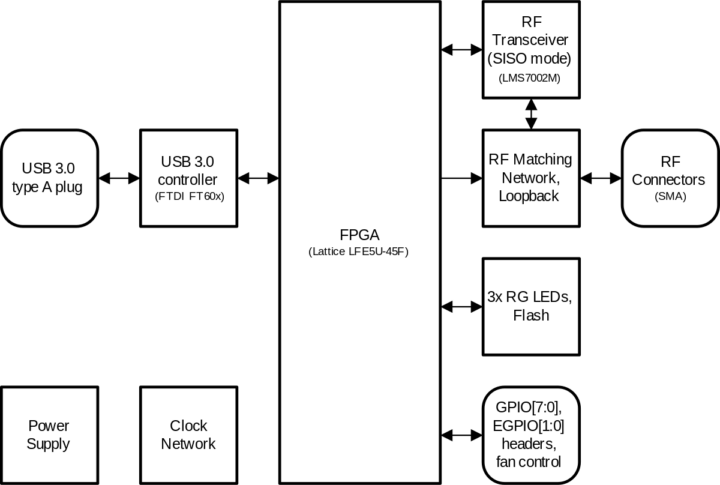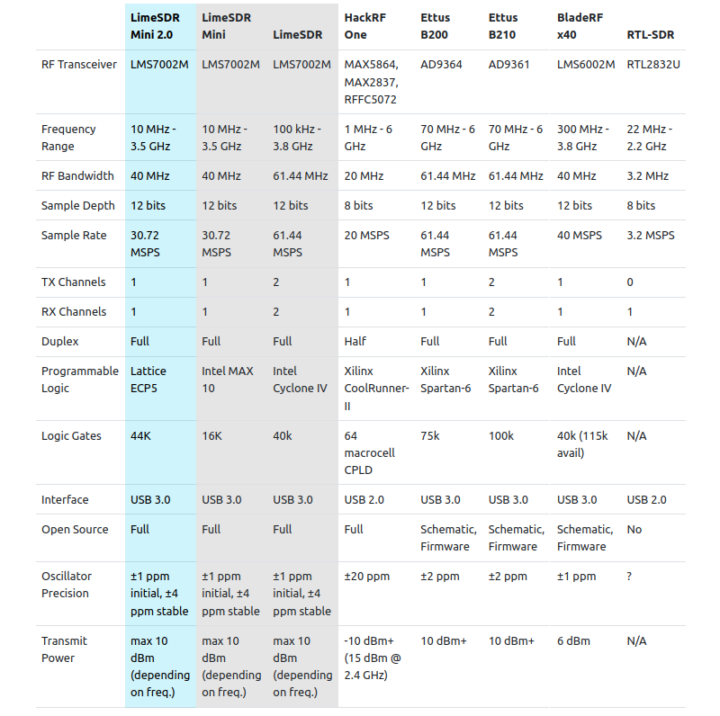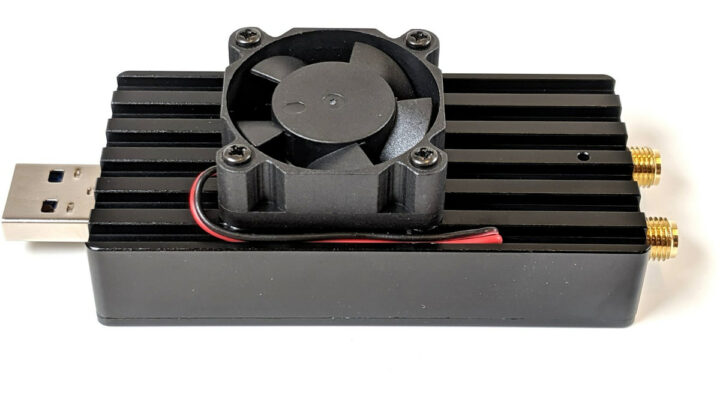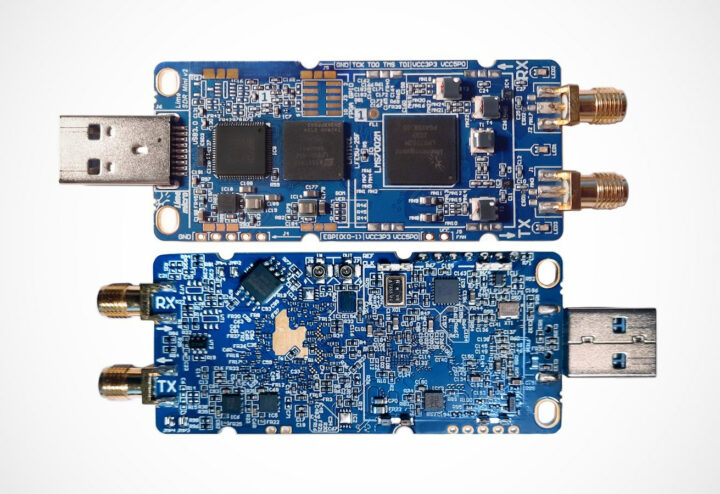The LimeSDR Mini is an open-source hardware full-duplex USB SDR board based on Intel Altera Max 10 Altera FGPA that was introduced in 2017 on Crowd Supply and raised close to $2 million US dollars. Since it has been used in various projects including digital TV transmitters.
Lime Microsystems is now back on Crowd Supply with the similar-looking LimeSDR Mini 2.0 replacing the MAX 10 FPGA with 16K logic gates with a more powerful and capable Lattice Semiconductor ECP5 FPGA with 44K logic gates while keeping the company’s LMS7002 RF transceiver.
LimeSDR Mini 2 specifications:
- FPGA – Lattice Semi ECP5 (LFE5U-45F) with 44K logic gates, 108 sysMEM blocks (18kb), 1,944 Kb embedded memory, 351 Kb distributed RAM bits
- Storage – 4 MB flash memory for data; 2x128KB EEPROM for RF transceiver MCU firmware and data
- RF
- Lime Microsystems LMS7002M RF transceiver
- Tx & Rx SMA connectors
- Frequency range – 10 MHz to 3.5 GHz
- RF bandwidth – 40 Mhz
- Sample Rate – 30.72 MSp/s with 12-bit sample depth
- Power Output (CW): up to 10 dBm depending on the frequency
- USB – 1x USB 3.0 port via FTDI FT60x controller chip
- Expansion – 8-pin FPGA GPIO header
- Misc – 3x dual color LEDs, JTAG
- Power – USB or external power supply
- Dimensions – 69 mm x 31.4 mm

The company will make the LimeSDR Mini 2.0 open-source hardware, and release the schematics and PCN layout, manufacturing files (e.g., Gerbers, drill, and part placement files), FPGA gateware, host software, documentation, and toolchain configuration before going to production.
Beyond the higher number of logic gates, Lime Microsystems lists two other advantages of ECP5 against the MAX10 FPGA: first, it is more readily available (the main reason why LimeSDR Mini 2.0 was designed), and second, it is supported by plenty of open source tools and has a great community of developers that are gathered around ECP5 boards such as OrangeCrab, Radiona ULX3S, or LUNA.
 The comparison table above shows how the LimeSDR Mini 2.0 fares against the earlier LimeSDR and LimeSDR Mini boards, as well as competing solutions such as HackRF One, Ettus B200/B210, BladeRF x40, or even the entry-level RTL-SDR USB dongle.
The comparison table above shows how the LimeSDR Mini 2.0 fares against the earlier LimeSDR and LimeSDR Mini boards, as well as competing solutions such as HackRF One, Ettus B200/B210, BladeRF x40, or even the entry-level RTL-SDR USB dongle.
LimeSDR Mini 2.0 is compatible with the same enclosures and antennas as the original LimeSDR Mini, and like its predecessor can be used in a variety of RF projects including Amateur digital TV broadcast, satellite ground station, streaming FM to the Internet, spectrum-scanning jammer and controller for drones, bit pattern generator aligned with the SDR data stream, digital audio broadcast, and more. But the new USB SDR dongle should be able to support an even wider range of applications thanks to the extra logic gates.
The LimeSDR Mini was launched for as low as $99 (Early Bird) and a standard price of $139, but the LimeSDR Mini 2.0 is significantly pricer at $399 due to the higher price for the Lattice ECP5 FPGA, and most likely the current semiconductor shortage and high inflation. Optional accessories include acrylic or aluminum metal cases, a multi-band 4G/3G/2G monopole antenna, and a Grove Starter Kit with various sensors and actuators. Shipping adds $8 to the US and $18 to the rest of the world, and the first 1,000 backers should expect their rewards to ship by mid-October 2022, while those would pledge later would have to wait at least until Q1 2023.


Jean-Luc started CNX Software in 2010 as a part-time endeavor, before quitting his job as a software engineering manager, and starting to write daily news, and reviews full time later in 2011.
Support CNX Software! Donate via cryptocurrencies, become a Patron on Patreon, or purchase goods on Amazon or Aliexpress





